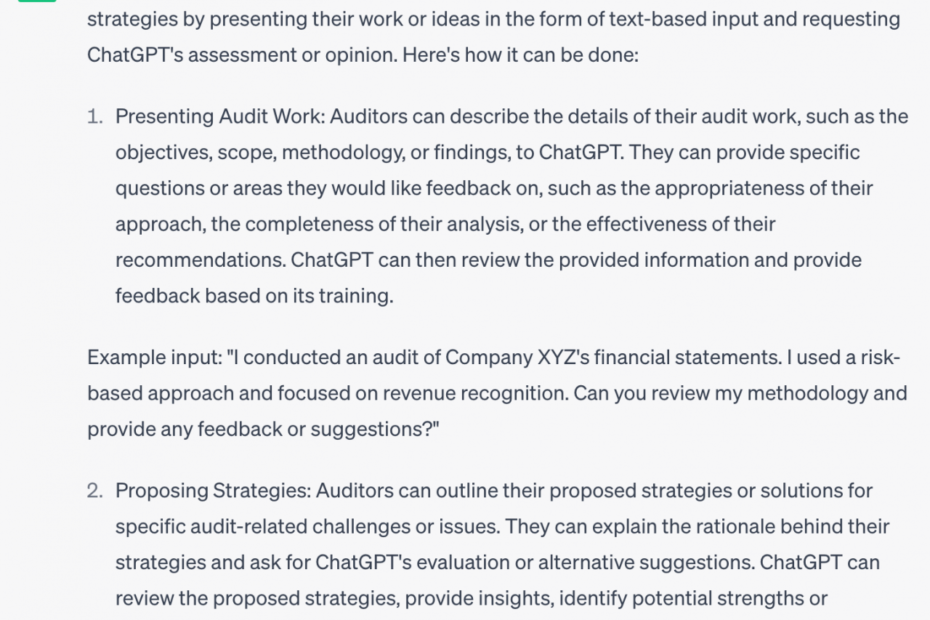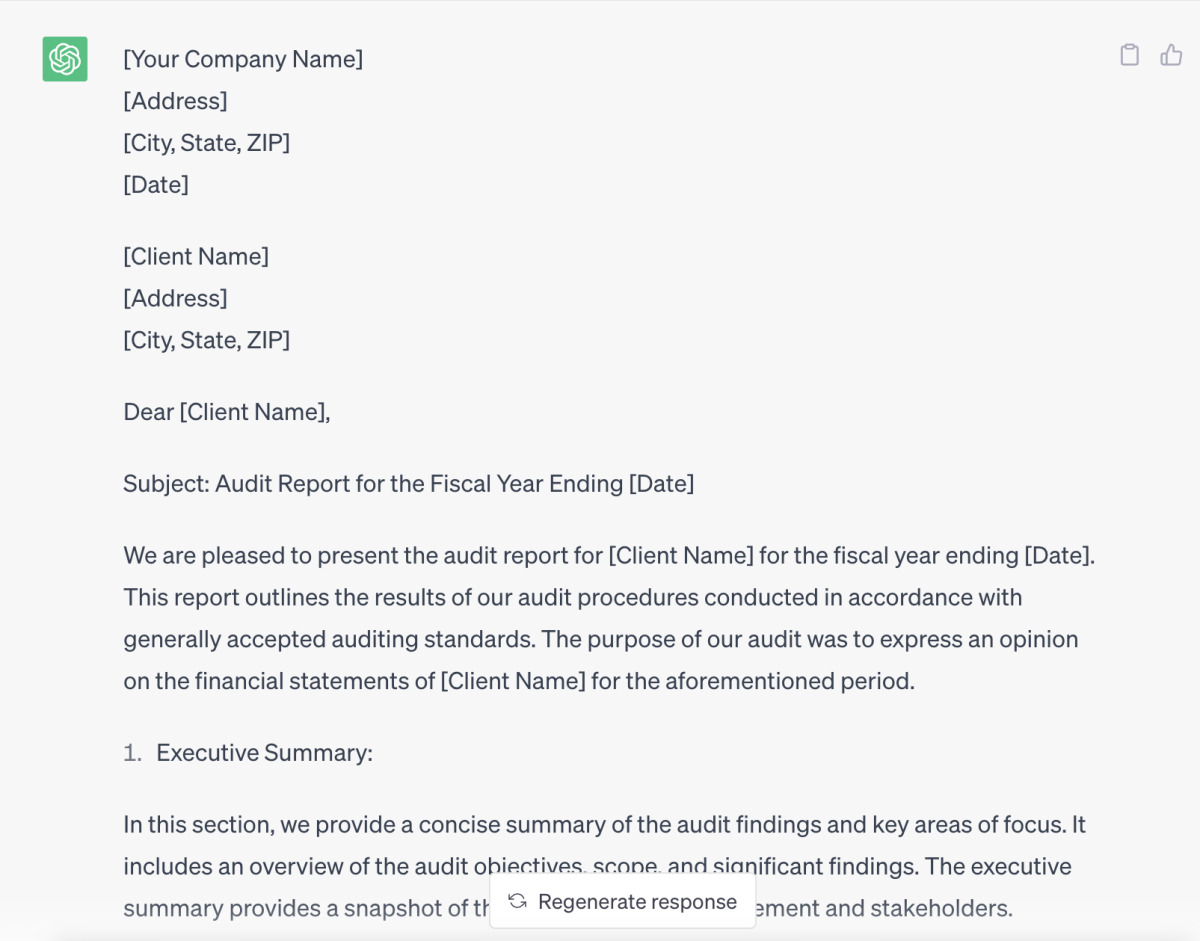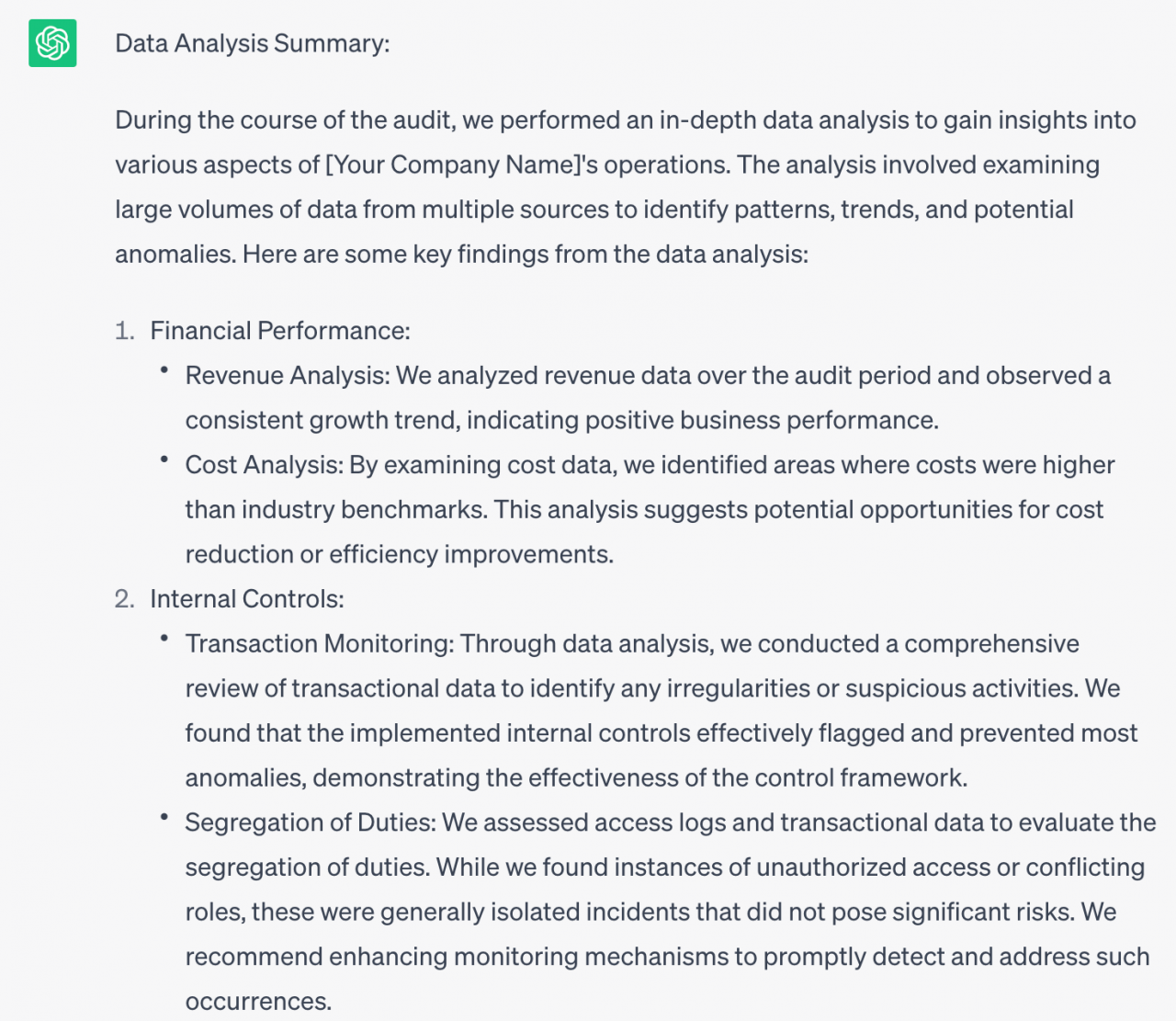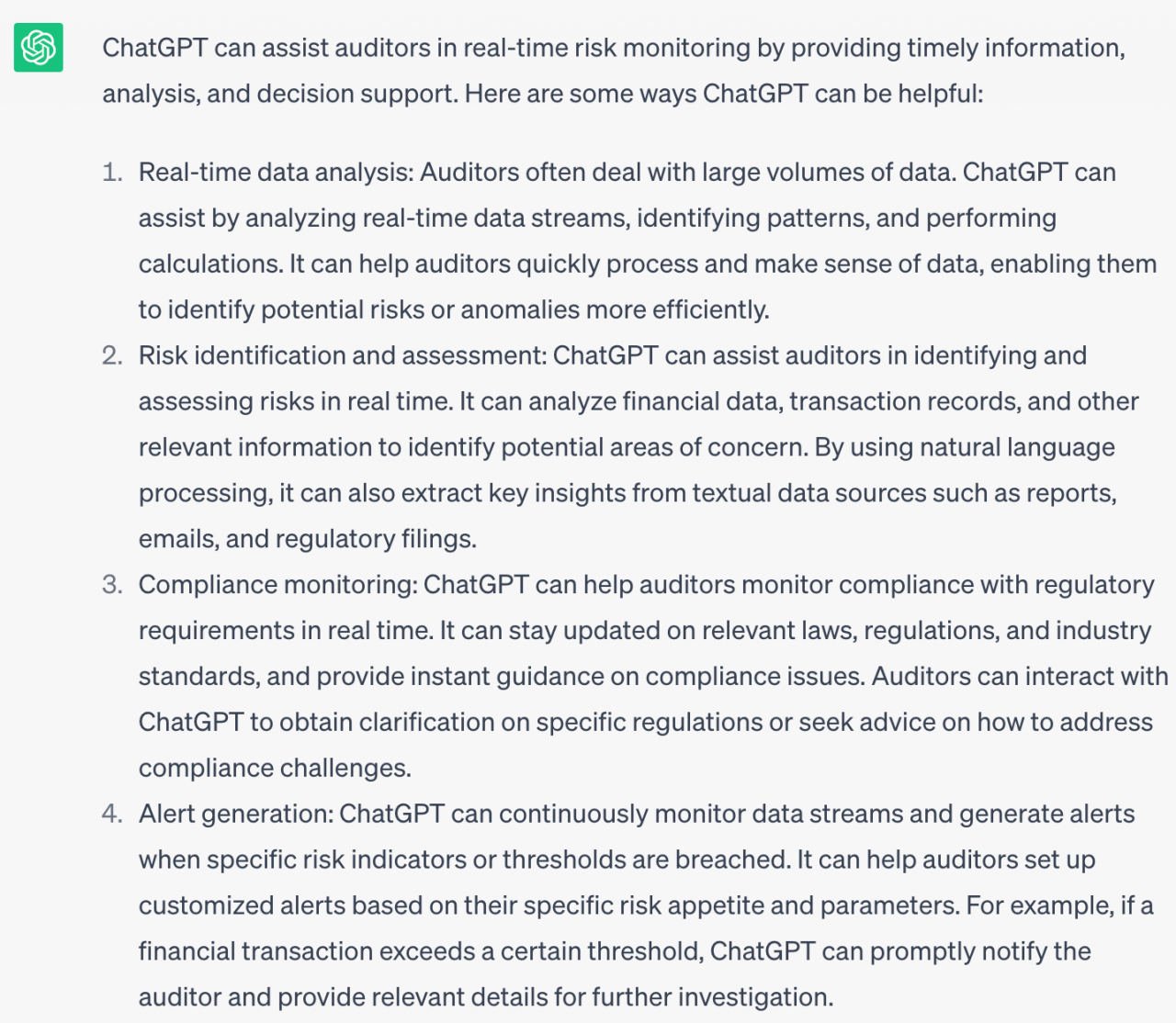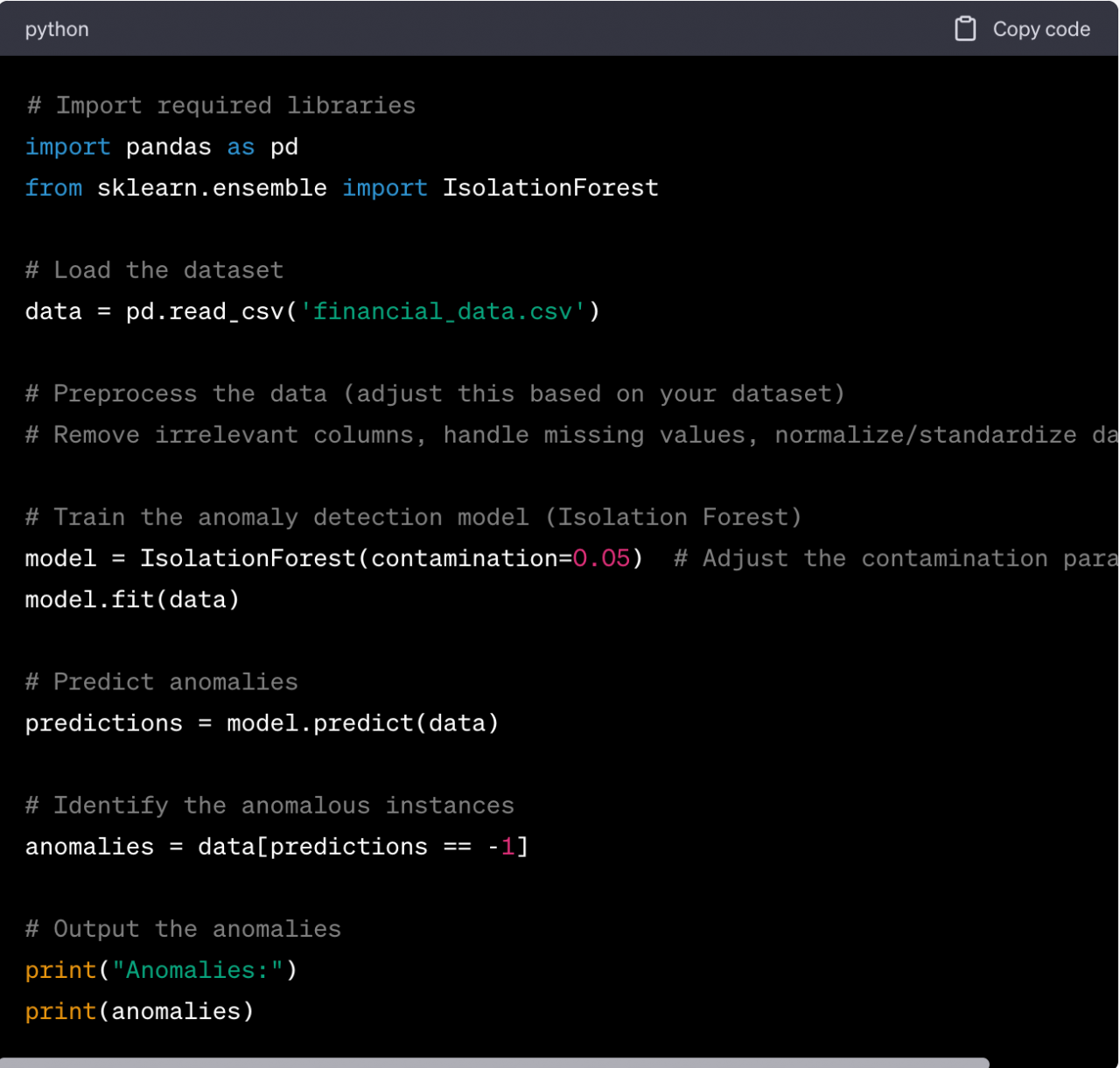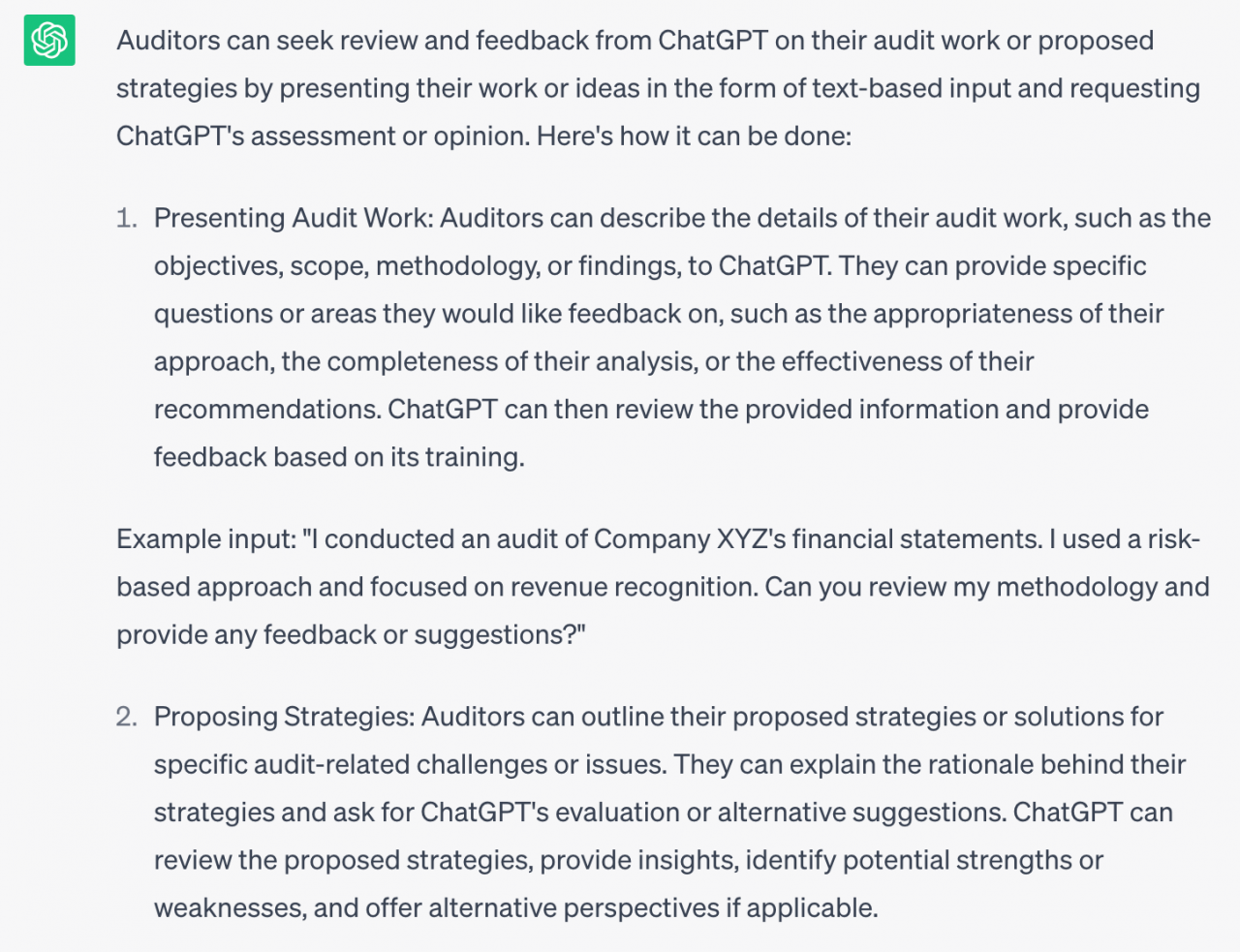The rapid evolution of artificial intelligence (AI) is transforming the landscape across industries, including the auditing profession. One of the most buzzed about AI innovations has been ChatGPT, OpenAI’s conversational AI system. With its advanced natural language and text generation capabilities, ChatGPT can help auditors work smarter by automating repetitive reporting, analyzing complex data, monitoring risks in real-time, detecting anomalies, and even training auditors.
However, as with any emerging technology, auditors must approach ChatGPT thoughtfully, not as a plug-and-play solution. Successful adoption requires understanding ChatGPT’s capabilities and limitations, establishing proper oversight, and fostering effective collaboration between human auditors and AI.
This article will explore 5 key use cases of ChatGPT in auditing along with the associated benefits. We’ll also examine notable challenges auditors should address to integrate ChatGPT safely and productively. Finally, we’ll discuss best practices for building the right framework for human-AI collaboration in auditing.
An Introduction to ChatGPT and Its Transformative Potential for Auditing
Before exploring specific use cases, let‘s briefly demystify this buzzy AI and its applicability in auditing.
Released in November 2022, ChatGPT leverages a natural language processing technique called transformer neural networks. This allows the model to comprehend nuanced text prompts and provide remarkably human-like responses on nearly any topic.
ChatGPT can summarize lengthy texts, translate languages, write stories, generate code, answer questions, and much more. It learns from vast datasets and continues improving through machine learning.
According to OpenAI, ChatGPT has been trained on over 500 billion words and 41 billion parameters. This massive foundation enables its versatility and conversational abilities.
These capabilities lend nicely to automating rote auditing tasks, analyzing large datasets, producing written output, assessing risks, and training auditors through examples and explanations. As ChatGPT evolves, its potential to enhance auditor productivity and quality continues growing.
However, human oversight remains essential for sound judgement and reliability in auditing. The wise approach is viewing ChatGPT as a collaborator rather than a replacer of skilled auditors.
When applied judiciously, ChatGPT can help auditors work smarter – not replace them. Let‘s examine 5 key applications in auditing that showcase its possibilities.
5 Use Cases of ChatGPT in Auditing
Here are 5 impactful ways auditors can apply ChatGPT‘s capabilities in their workflows:
1. Automating Reporting & Documentation
Auditors spend significant time producing standardized reports and paperwork to document findings. Manual reporting can be tedious, inconsistent, and prone to errors.
ChatGPT streamlines reporting by automatically generating well-written audit documents. According to a 2021 PwC study, AI automation can reduce the time spent on auditing tasks by up to 23%.
Once findings are described in plain language, ChatGPT can produce polished reports with standardized structure and presentation. This boosts efficiency while enhancing report consistency and quality.
As Figure 1 shows, ChatGPT can generate a professional introduction for an audit report simply based on a short prompt.
Figure 1: ChatGPT generated audit report introduction. Source: OpenAI
Relieving auditors from repetitive documentation tasks enables them to focus on higher-value work like risk insights and stakeholder communications.
2. Data Analysis
Audits involve analyzing sizable datasets to uncover risks, anomalies, trends, and root causes. Manually processing and crunching these numbers is tedious and time-consuming.
Per a 2022 Deloitte survey, 67% of auditors say interpreting outputs and insights is their top AI challenge. This pain point presents an opportunity for ChatGPT‘s talents.
Rather than getting bogged down running numbers themselves, auditors can feed data directly to ChatGPT and ask relevant questions to gain data-driven insights.
As Figure 2 demonstrates, when provided with sample financial data, ChatGPT can analyze it on demand to highlight key metrics, patterns, and observations in easy-to-digest summaries.
Figure 2: ChatGPT conducting data analysis for an audit. Source: OpenAI
This allows auditors to focus on interpreting findings and piecing together the bigger picture rather than getting lost in the weeds of manual number crunching.
According to an IBM study, applying AI like ChatGPT to data analysis can improve productivity by up to 23%. This efficiency gain frees up auditors for higher-value work.
3. Real-Time Risk Monitoring
Audits aim to provide assurance by assessing and mitigating risks. Traditionally, risk monitoring has been periodic.
By collaborating with ChatGPT, auditors can make risk monitoring continuous rather than confined to audit engagements.
Through natural discussion with ChatGPT about the client‘s operations, systems, and business environment, auditors can get real-time insights into risk levels and priority issues warranting attention.
As Figure 3 shows, ChatGPT can highlight emerging risk hotspots, compliance gaps, weak controls, or other red flags that pose threats.
Figure 3: ChatGPT identifying risks in real-time monitoring. Source: OpenAI
This continuous risk monitoring supplements periodic audits with more frequent data-driven risk signals, enabling earlier detection of hazards.
According to PwC, 75% of assurance engagements will be continuous by 2026, with real-time monitoring capabilities like ChatGPT playing a key role.
4. Anomaly Detection
Needle-in-a-haystack anomaly detection can be like finding a needle in a…well…haystack!
Auditors must sift through massive datasets to identify unusual patterns indicating potential fraud or other issues. But manual detection has clear limitations in scale and consistency.
This pain point provides another opportunity to augment auditors with ChatGPT. The model can rapidly analyze datasets and spot anomalies that a human might miss.
As Figure 4 shows, when given a sample dataset, ChatGPT can even generate machine learning code to detect anomalies automatically using techniques like isolation forests.
Figure 4: ChatGPT generating anomaly detection code. Source: OpenAI
With proper human supervision, this can greatly strengthen fraud detection and risk monitoring capabilities.
According to a 2020 Deloitte survey, 97% of auditors believe AI will enhance fraud detection, with models like ChatGPT playing a key role.
5. Auditor Training & Development
Ongoing learning is essential for auditors to stay abreast of the latest standards, emerging risks, and industry issues.
ChatGPT provides auditors with an always-available training resource that can explain auditing concepts, provide examples, generate case studies, and offer feedback.
Rather than waiting for sporadic training events, auditors can learn on-demand directly from ChatGPT.
As Figure 5 shows, ChatGPT can clarify auditing concepts, discuss work papers, and have interactive discussions that build auditors‘ capabilities through practice and coaching.
Figure 5: Two ways ChatGPT can train auditors. Source: OpenAI
A Deloitte survey found that 58% of auditors believe AI-assisted learning will enhance audit quality. ChatGPT provides interactive, on-demand learning.
These 5 use cases demonstrate that when applied judiciously, ChatGPT can drive significant efficiency, productivity, risk coverage, and development gains for auditors. However, there are also notable limitations and risks auditors must address.
Key Challenges and Limitations of Applying ChatGPT in Auditing
While the benefits are compelling, auditors must approach implementing ChatGPT thoughtfully, not as a plug-and-play solution. Key challenges include:
The Black Box Problem
Like any AI, the inner workings of ChatGPT are opaque to users. The model was trained on vast troves of data, but auditors lack visibility into that process or the reasoning behind its outputs.
This “black box” nature poses interpretability challenges. Auditors must take care not to blindly trust ChatGPT‘s outputs without scrutiny.
Potential biases
Despite extensive training, ChatGPT can inherit unintended biases from its datasets. This can lead to unfair, unethical, or invalid outputs.
Without proactive bias testing and mitigation, results could be dangerously skewed. Auditors must monitor for bias rigorously.
Communication limitations
ChatGPT lacks human social intelligence for sensitive communications like reporting audit findings or corresponding with stakeholders.
Nuanced human conversations remain irreplaceable for earning trust, expressing empathy, and using discretion appropriately.
No true comprehension of context
As an AI system, ChatGPT has no real-world experience. This limits its ability to comprehend nuances, implications, and the full context around audits.
Human interpretation, wisdom and domain expertise remain indispensable when making decisions based on ChatGPT‘s outputs.
Accountability risk
If auditors overly depend on ChatGPT without enough oversight, then accountability falls into a grey zone.
Responsibility for ethics, quality, and sound judgement ultimately resides with human auditors. Proper controls must exist.
These limitations underscore the need for judicious, controlled adoption of ChatGPT to enhance – not replace – skilled auditors. Next we’ll explore best practices for fostering productive human-AI collaboration in audits.
3 Best Practices for Productive Human-AI Collaboration in Auditing
The key to overcoming limitations and maximizing productivity gains from ChatGPT is combining the strengths of humans and AI through effective collaboration:
1. Rigorously Audit the AI
First and foremost, auditors should audit the AI with as much rigor as any other component of attestation work:
-
Evaluate training data – Assess datasets for quality, completeness, biases, and other flaws that could skew outputs.
-
Perform error testing – Test ChatGPT responses against known outcomes to gauge accuracy across various scenarios.
-
Assess internal controls – Scrutinize OpenAI‘s development, testing, monitoring and ethics safeguards.
-
Demand explainability – Require details on ChatGPT‘s reasoning and confidence behind outputs.
-
Mitigate risks – Enforce controls to address limitations at both the human and AI level.
By auditing the AI itself, organizations can make informed decisions on safely applying ChatGPT in appropriate, controlled ways.
2. Add Human Wisdom to AI Knowledge
Next, auditors should complement ChatGPT‘s computational power with human wisdom.
The ideal collaboration is humans leveraging AI, not the other way around. Auditors must:
-
Interpret outputs – Add context on the meaning, relevance and implications of ChatGPT‘s findings.
-
Apply judgment – Relate outputs to risks, controls, anomalies and other interconnections that only human auditors may recognize based on experience.
-
Validate relevance – Determine if and how AI outputs should shape decisions, requirements, and next steps.
-
Communicate findings – Add nuance, discretion and engagement when discussing insights with stakeholders.
-
Maintain ownership – Preserve clear responsibilities for oversight, quality, ethics and professional standards.
3. Continuously Improve AI Knowledge
Finally, auditors should continuously improve ChatGPT‘s knowledge to produce more valid, valuable insights over time:
-
Provide client & industry training data – Expand ChatGPT‘s knowledge by uploading relevant datasets, documentation, examples and scenarios from the client‘s specific environment and sector.
-
Give feedback on outputs – Further refine ChatGPT‘s responses by identifying errors, providing corrections, and indicating where confidence levels or reasoning were questionable.
-
Re-train with qualified data – Work with OpenAI to re-train ChatGPT on new datasets that address gaps or weaknesses revealed through auditing of the model.
This perpetual enhancement loop lets ChatGPT and humans learn together, compounding productivity over time.
By following these best practices, audit teams can transform ChatGPT from potential disruptor to trusted partner.
The Future of AI in Auditing Hinges on Forging Human-Machine Symbiosis
ChatGPT provides auditors with an impressive array of capabilities that promise to eliminate drudgery, boost productivity and enhance quality. However, as with any transformative technology, prudent governance, continuous improvement, and symbiotic human oversight remain essential to fulfill its full potential.
The organizations that will win in the future are those that proactively shape how humans and machines can form a cohesive, integrated and ethical whole that far surpasses their individual contributions.
With the right vision and execution, auditors have an unprecedented opportunity to work smarter, uncover more risks, strengthen controls, improve stakeholder assurance, and even reinvent their skill sets for the algorithmic age. The question now is which audit leaders will have the foresight and courage to forge this human-AI alliance.
